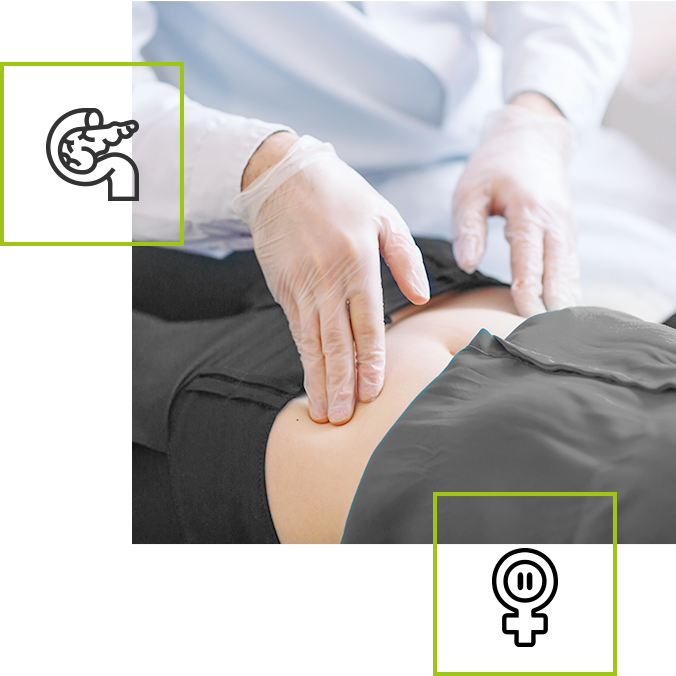Vibrotherapy – regulates metabolism just like exercise
Vibrotherapy has beneficial effects on metabolism, from boosting metabolism in unconscious intensive care patients, to regulating insulin-dependent metabolism, bone metabolism and metabolic syndrome.
How does it work?
Vibrotherapy affects metabolism similarly to moderate-intensity physical activity. Among other things, it increases blood flow and thus oxygenation and tissue nutrition. In addition to its action on the cardiovascular system, the direct effect on the neuromuscular system is also the most significant in inducing the beneficial effects of vibrotherapy on metabolism.


When and for whom?
Vibrotherapy has been shown to be safe and effective, comparable to the use of physical activity, in numerous conditions with metabolic problems, such as type 2 diabetes, metabolic syndrome, post-menopause, and even in intensive care unit patients, where vibrotherapy has been used to activate muscles in long-lying patients.
Effectiveness
Therapeutic vibration treatments induce biological responses in as little as 5 weeks that will improve functional parameters in the metabolic syndrome without interfering with physiological parameters.

del Pozo-Cruz B, Alfonso-Rosa RM, del Pozo-Cruz J, Sañudo B, Rogers ME. Effects of a 12-wk whole-body vibration based intervention to improve type 2 diabetes. Maturitas. 2014 Jan;77(1):52-8
Benefits of vibrotherapy

No side effects

Action confirmed by scientists and practitioners

Perceptible effects from 1 treatment

Long-lasting effects through systematic use
Choose the right product
We will help you select a set of modules that suits your conditions.
What is metabolic syndrome?
Metabolic syndrome is a common risk factor for atherosclerosis. The WOBASZ survey, conducted in 2003-2005 on a representative group of Polish residents, found that metabolic syndrome is present in 5.8 million Polish residents aged 20-74. The easiest risk factor to investigate is abdominal obesity. It is assumed that a waist circumference of more than 80 cm in women and 94 cm in men, and a BMI of more than 30, is a prerequisite for the diagnosis of metabolic syndrome. To definitively confirm the interaction of harmful factors, biochemical tests such as lipid profile and fasting glucose levels should be performed. Elevated triglyceride levels, too little HDL cholesterol and too much LDL cholesterol, and elevated fasting blood glucose levels are all risk factors. In addition, elevated blood pressure above 130/85 mm Hg is a factor included in the risk of metabolic syndrome. A prerequisite for a definitive diagnosis is the presence of abdominal obesity, in combination with two of the other four risk factors (as defined by the International Diabetes Federation).
Causes of metabolic syndrome
Influence of lifestyle. The causes of metabolic syndrome may be genetic factors, foetal malnutrition, disorders of organogenesis, especially of adipose tissue during foetal life. However, it is environmental factors (lifestyle) that lead to the full development of this condition. Thus, it can be said that the symptoms of the metabolic syndrome arise from the interaction of genetic abnormalities, abnormalities of personal development during foetal and early childhood, and civilization influences that promote abdominal obesity, insulin resistance, type 2 diabetes, dyslipidaemia and hypertension. A common substrate for these disorders is insulin resistance.
Insulin resistance
Reduced response of target cells to insulin for various reasons. Insulin resistance is a major pathophysiological factor in the metabolic syndrome, very often combined with obesity. Insulin resistance promotes the development of hyperglycaemia leading to type 2 diabetes. Abdominal obesity precedes the onset of insulin resistance and the other elements of the metabolic syndrome - hyperglycaemia, impaired lipid metabolism, hypertension and other factors that accelerate the development of atherosclerotic cardiovascular disease and type 2 diabetes.
Treatment of metabolic syndrome with vibration training
The primary element used in the prevention and treatment of metabolic syndrome is lifestyle modification related to physical activity and proper (healthy) nutrition. The results of meta-analyses indicate that exercise (aerobic, strength training) will reduce glycated haemoglobin (HbA1c), fasting blood glucose, dyslipidaemia and blood pressure. An alternative method to help treat metabolic syndrome is whole-body vibration training. This is a relatively new form of passive exercise, with similar effects to moderate-intensity active exercise, which has proven effective in both healthy people and those with a range of disease disorders. Such training is useful for people who are not very active in sports throughout their lives or those with obesity. Vibration training has been shown to take less time than physical exercise (aerobic or resistance training), so this training method can be a very good alternative to physical exercise or a good complement to it.





